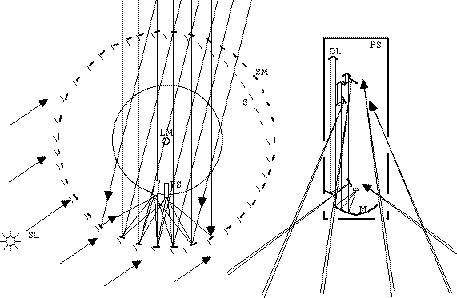

Figure 8: Proposed "Moth Eye Interferometer" using many free-flying mirrors. The mirrors SM are elements of a single giant sphere. Focal stations FS are mobile along the focal surface. Each collects light beams (inset at right) from multiple elements SM and corrects the spherical aberration of the giant sphere, using delay lines DL. The focal optics also provides a densified pupil, for efficient direct imaging and coronagraphy in the recombined image. The free-flying mirrors SM are maintained at fixed positions by small solar sails S receiving sun light SL, under control from a centrally located laser metrology system LM. Since each mirror SM can feed many focal stations, the Moth Eye concept allows efficient parallel observing in many independant directions, with fewer mirrors than would be required if many narrow field interferometers were to be used. Dimensions from kilometers to thousands of kilometers appear feasible, and the number of mirror segments may be progressively increased from dozens to thousands.